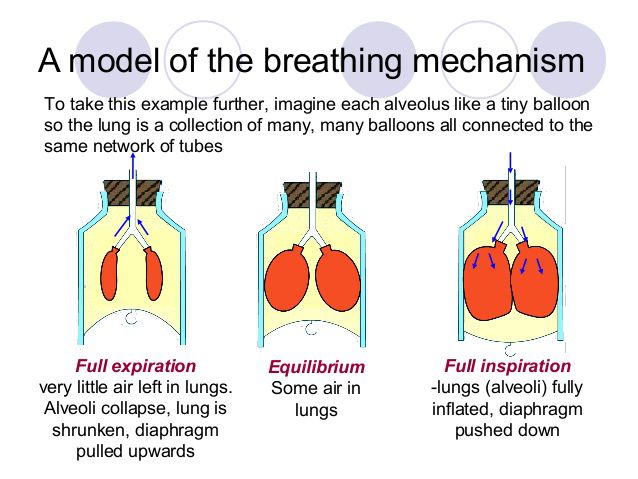Breathing through the ages
- 4 April 2018
At the age of 15 (year 11 at school), a light bulb moment occurred for me in the biology lab.
Our teacher was educating us on the body organs and had made a model of the diaphragm and the lungs (see below) – I was hooked.

From that point I was on my journey into the discovery of respiration and breathing.
The second thing I did that same year was to purchase "Science of Breath" by Swami Rama, Rudolph Ballentine, M.D. and Alan Hymes. M.D.
As a 15-year-old who had just learnt about respiration for the purpose of my school certificate biology, I then read that breathing affected many other bodily systems. At the time this was quite complex to understand but the final chapter on Prana blew my mind.
Here I am nearly 40 years later with 4 books of my own based on breathing, hundreds of clients, lectures and learning and this book and that biology lesson I still treasure.
Last week we touched on breathing and religion - this week philosophy.
One of the earliest references to Prana dates back 3,000 years. This age old philosophy holds breath in high esteem for the overall importance of not only health but universal life and energy. Prana is a Sanskrit word meaning life force. In Hindu, including yoga, Indian medicine and martial arts, Prana comprises all cosmic energy, permeating the universe on all levels. Prana includes the breath at all levels and in particular specific exercises which are called the practice of pranayama. This directly translates into the science of breath. Pranayama is one of the eight limbs of yoga, and is a practice of specific and often intricate breath control techniques.
We also see the importance of the breath in Chinese philosophy.
Dao or Tao [Chinese], Do or To [Japanese or Korean] means “path” or “way” and embraces the concepts of Yin and Yang and Qi (life energy). Laozi in the Tao Te Ching mentions the importance of natural and unforced breathing. About 300 BC, the Taoist philosopher Juang Tzyy described the relationship between health and breathing in his book “Nan Hwa Ching”. The scholars emphasised gaining a calm and peaceful mind. Their training focused on regulating the mind, body and breath.
Qi is the Chinese word for life energy, also spelled chi or ki. Qi and breath cannot be separated.
The Greek philosophers influenced the modern western philosophises. Much of their teaching focused on the mind and paid little attention to the breath,
However the following quote by Hippocrates as BradCliff practitioners we hail:
"The brain exercises the greatest power in human kind, but the air supplies sense to it." - Hippocrates
We thank Descartes for the birth of modern western medicine but sadly he too created a mind/body split which we still see embodied in modern medicine. Modern medicine still predominately only associates breathing with the delivery of oxygen, removal of carbon dioxide and the process of respiration.
However it's pleasing to see that breathing, not just respiration, is creeping into literature and research - more so in the last five years.
As a physiotherapist and a BradCliff practitioner, movement and breath and health are intertwined. Perhaps to look forwards, we need to look back.
Some of our collegues are doing amazing work in this felid – this will be covered in next week's blog.
Be a part of this trail blazing work in physiotherapy.
We look forward to seeing you at one of our courses in 2018! Breathing well is the foundation of health and wellness.
Tania Clifton-Smith
